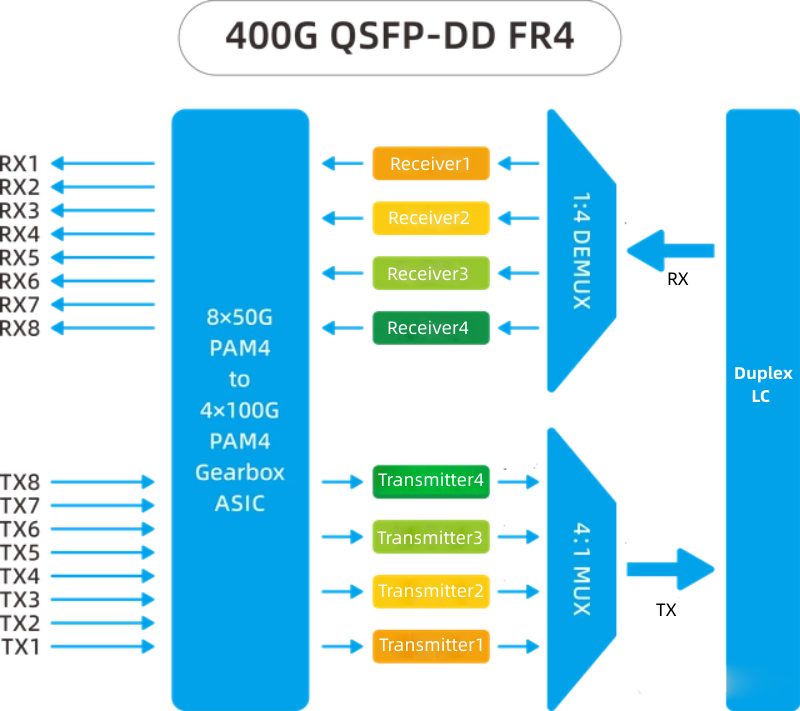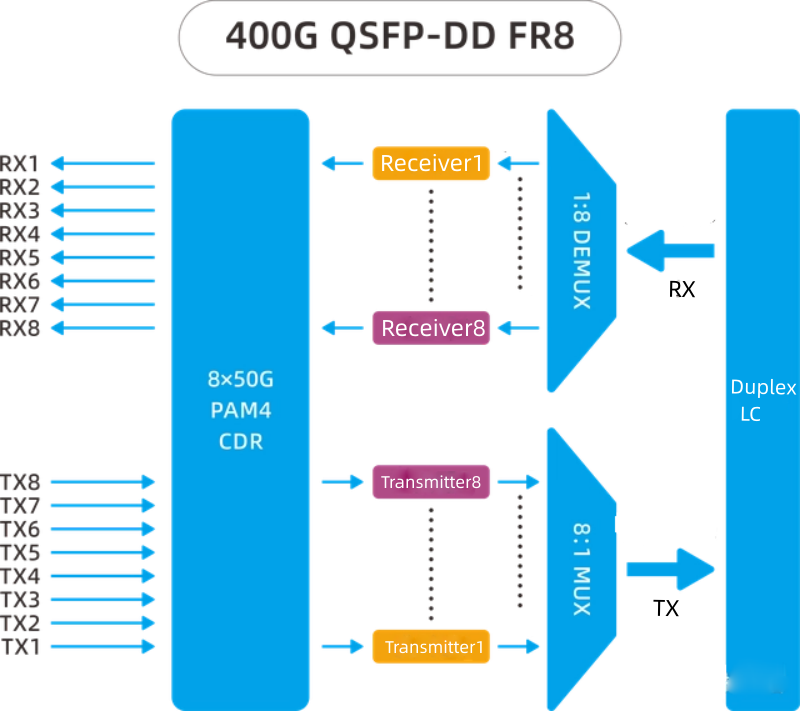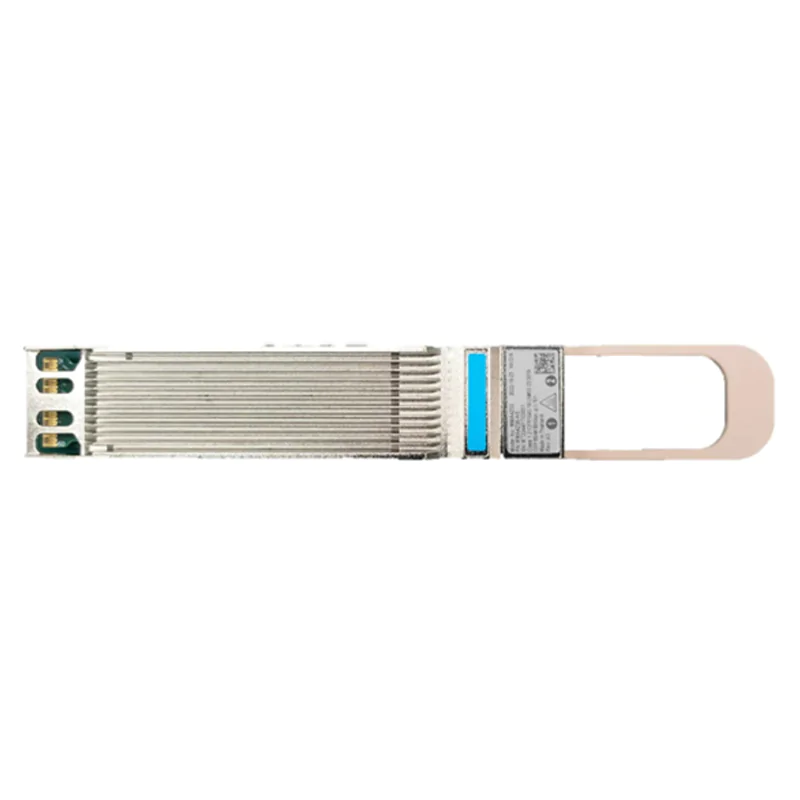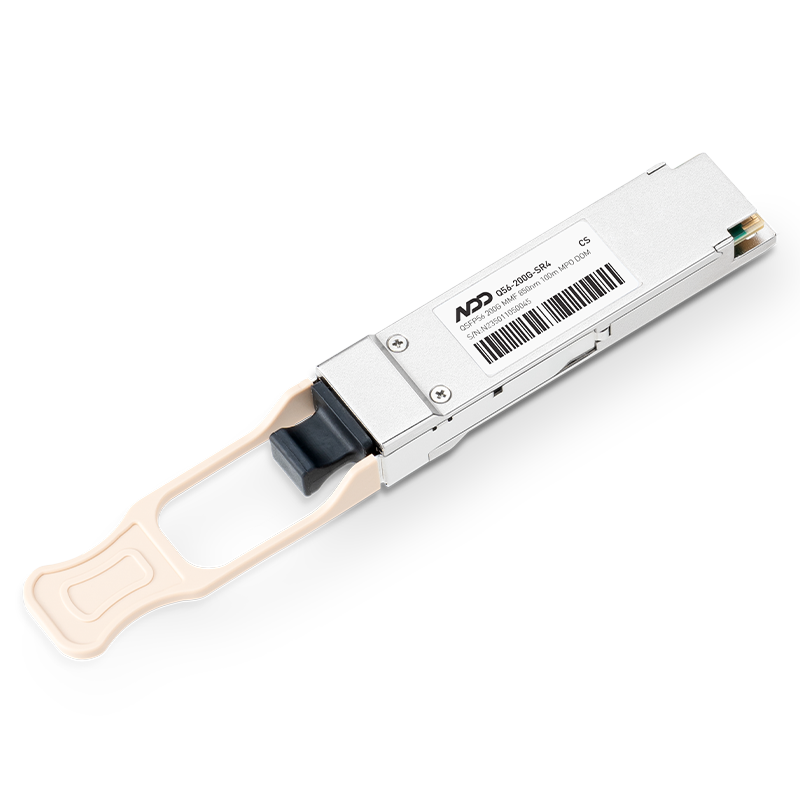400G QSFP-DD FR4 vs 400G QSFP-DD FR8
 Jason Data Center Architect Jan 5, 2023
Jason Data Center Architect Jan 5, 2023 With the development of optical communication technology, the market size of optical modules continues to grow. The 400G QSFP-DD package, with its advantages of low power consumption, small size, and high speed, has become one of the most popular optical modules in hyperscale data centers.
The cost and performance will drive the 400G optical communications market, allowing the number of 400G data centers to climb. In 400G data centers, two types of optical modules are available for the 2km WDM solution, 400G QSFP-DD FR4 and 400G QSFP-DD FR8. What is the difference between them? And how should they be selected? We will explore it in this article.
What is 400G QSFP-DD FR4?
400G QSFP-DD FR4 is an optical module with a channel full-duplex transmit and receive integrated design. It adopts a hot-swappable QSFP-DD package, which complies with QSFP-DD MSA and IEEE 802.3cu 400GBASE-FR4 Ethernet standards. It uses dual LC optical interfaces and can transmit over single-mode fiber (SMF) up to a maximum distance of 2km. The maximum power consumption is less than 10W.
What is 400G QSFP-DD FR8?
The 400G QSFP-DD FR8 optical module (400G QSFP-DD 2FR4 optical module) is a 2* 200G module. Unlike the 400G QSFP-DD FR4 optical module, the 400G QSFP-DD FR8 optical module uses 50G PAM4 modulation technology and provides eight optical fiber channels, making it suitable for multi-channel data communication. Typically, the 400G QSFP-DD FR8 optical module can be connected to the opposite 200G FR4 optical module via a 2× CS to 2× LC duplex branch fiber jumper.
What is the difference between 400G QSFP-DD FR4 and 400G QSFP-DD FR8?
Reliability
The 400G QSFP-DD FR4 baud rate is 53.125GBd, and the 400G QSFP-DD FR8 baud rate is 26.5625GBd. As the baud rate increases, the MPI cost and CD cost of PAM4 gradually increase, facing the challenge of long-term reliable operation, thus requiring a more robust FEC and addressing interoperability issues. Both optical modules use KP4 FEC, 400G QSFP-DD FR4 with >80% Margin per channel and 400G QSFP-DD FR8 with >90% Margin per channel, 400G QSFP-DD FR8 will be more reliable compared to others.
Modulation mode
Both 400G QSFP-DD FR4 and 400G QSFP-DD FR8 are 8-way 53Gbps PAM4 modulation on the electrical side, but the difference is on the optical side. 8-way 53Gbps PAM4 modulation is used on the FR8 optical side; 4-way 106Gbps PAM4 modulation is used on the FR4 optical side, and the Gearbox chip is used internally to multiplex the two electrical inputs into one way signal and then modulate it to the optical side, so the rate on the optical side is twice as fast as the electrical side. The 50G PAM4 is upgraded to 100G PAM4 modulation and the dispersion tolerance is reduced.


DSP Latency
The 400G QSFP-DD FR4 uses an 8:4 Gearbox internally, resulting in a poor latency performance of about 102ns, while the 400G QSFP-DD FR8 has only about 84ns latency. Therefore, 400G QSFP-DD FR8 has better latency performance. When making a choice, scenarios that require high-performance computing are better suited for the 400G QSFP-DD FR8.(Latency data from Broadcom DSP specifications for reference)
Power Consumption
The 400G QSFP-DD FR8 offers an improved link budget on one hand, but on the other hand, the use of more lasers makes the module more power hungry, the total laser cost per module is higher, and the optical package is more complex, resulting in lower yields and higher production costs. In contrast the 400G QSFP-DD FR4 has lower power consumption and simpler thermal processing capabilities.
How to choose 400G QSFP-DD FR4 and 400G QSFP-DD FR8?
In summary, compared with 400G QSFP-DD FR4, the 8-way optical 400G QSFP-DD FR8 has better transmission performance in all aspects, but slightly inferior in power consumption and cost. 400G QSFP-DD FR4 is suitable for commercial data centers, and 400G QSFP-DD FR8 is more suitable for high-performance computing.
Related Resources:
A Beginner Guide: What is 400G Optical Module?
400G Solutions Changes High-Bandwidth DCI Architecture
400G Optical Module Application Scenarios
400G Optical Transceiver Module Types
Typical Solutions for 400G Data Center



























